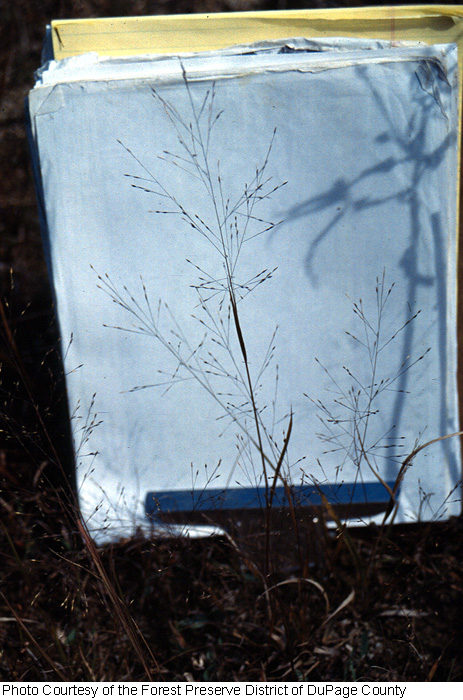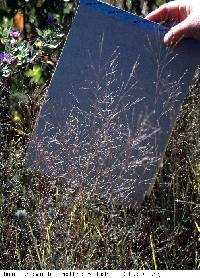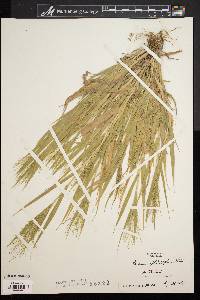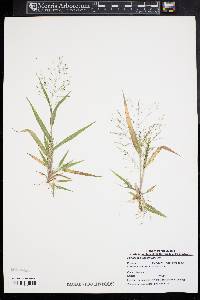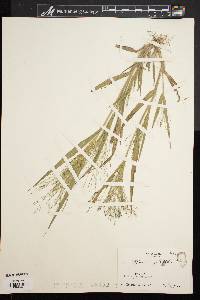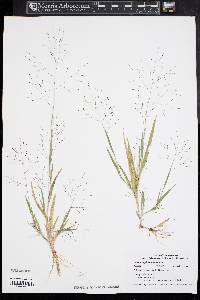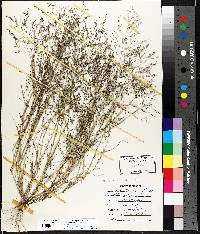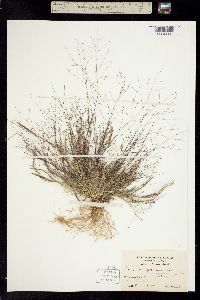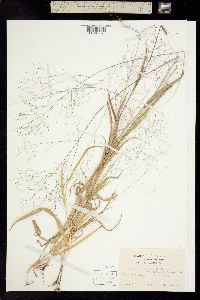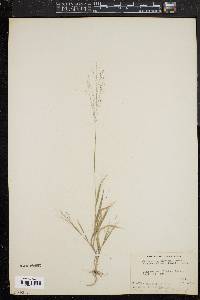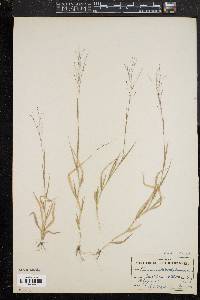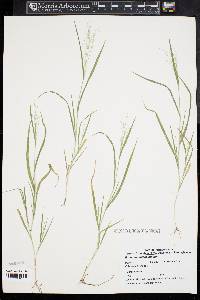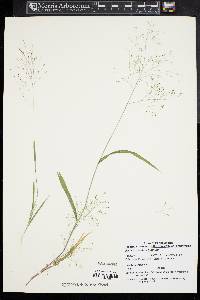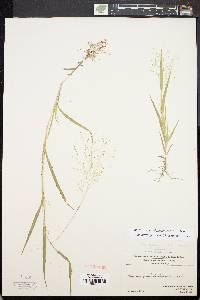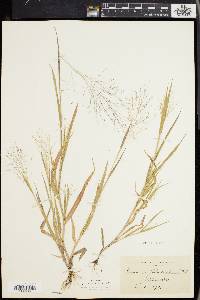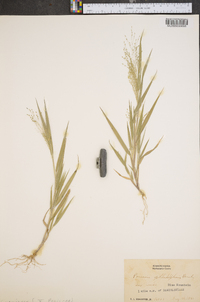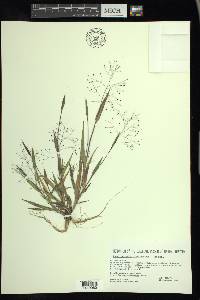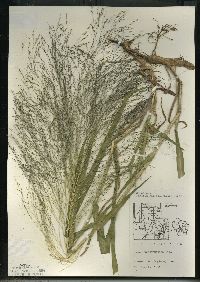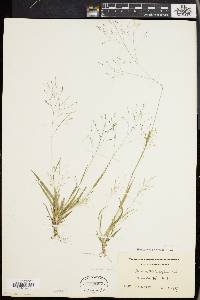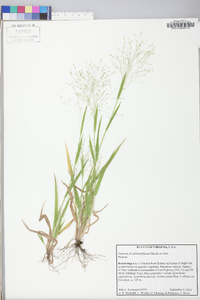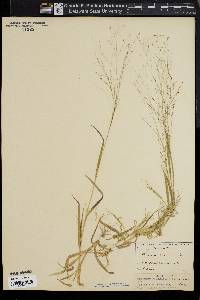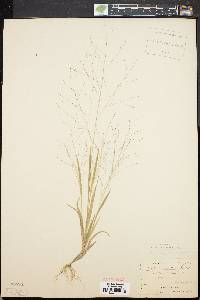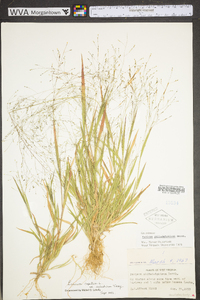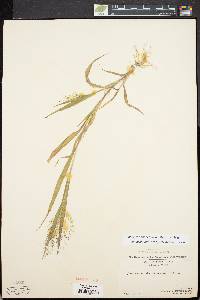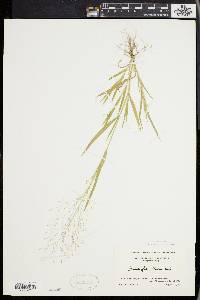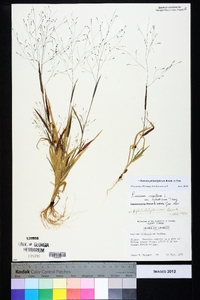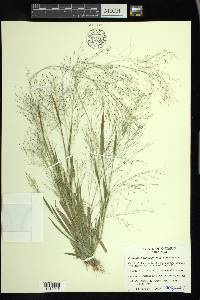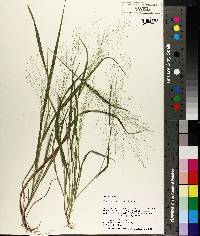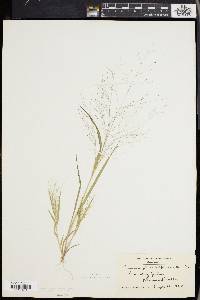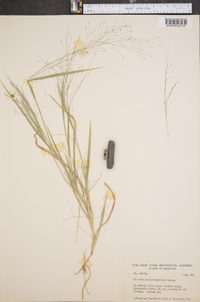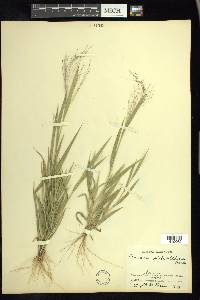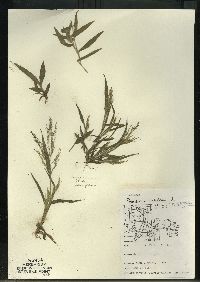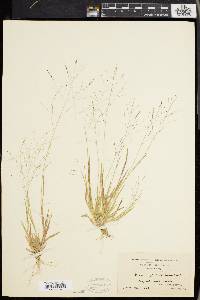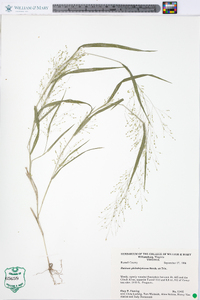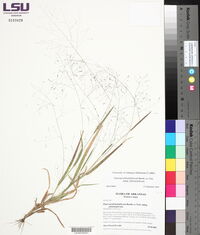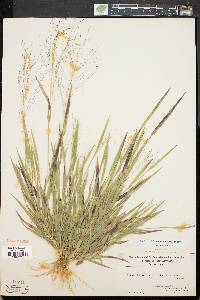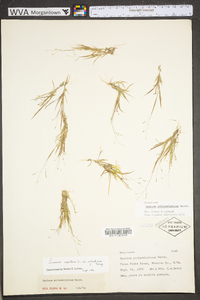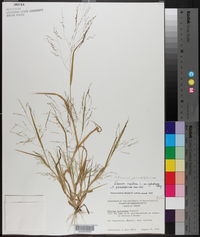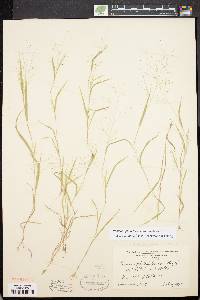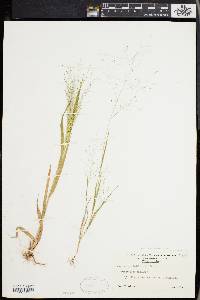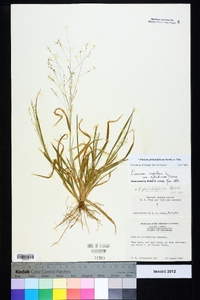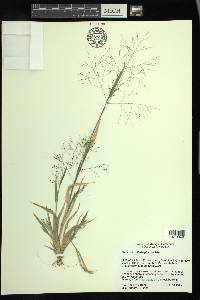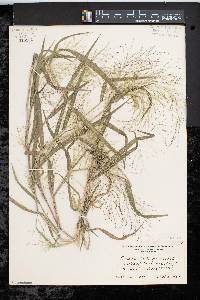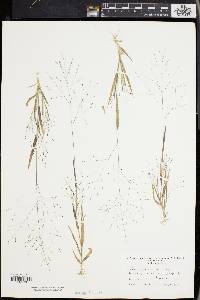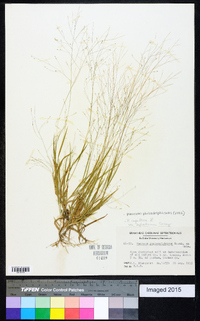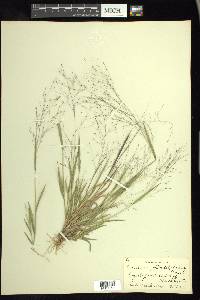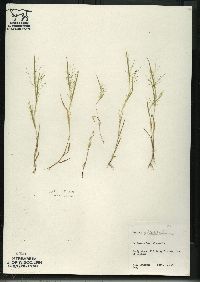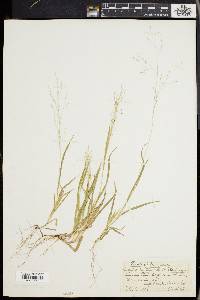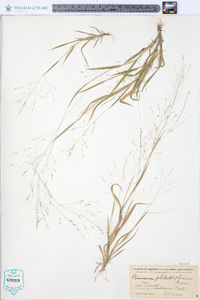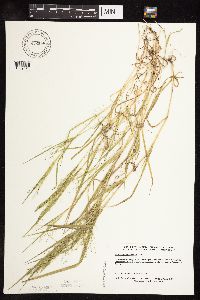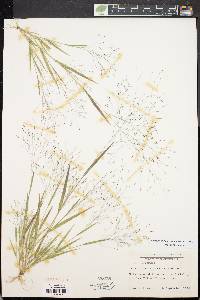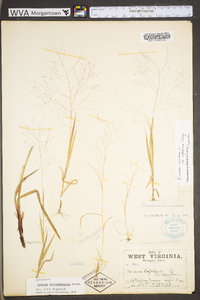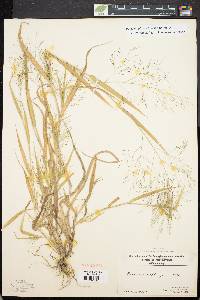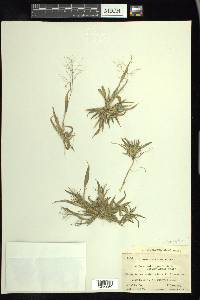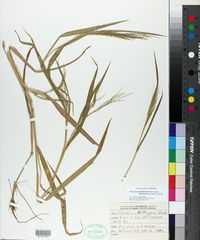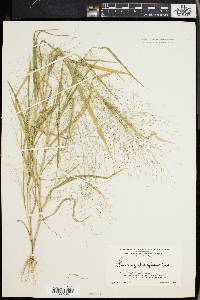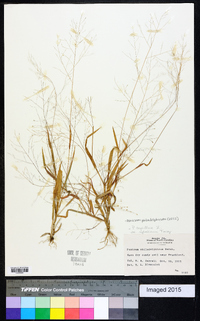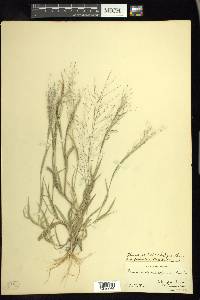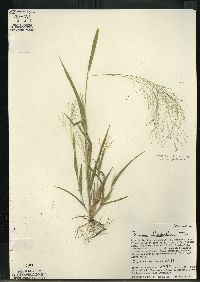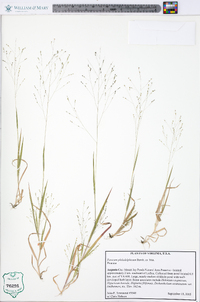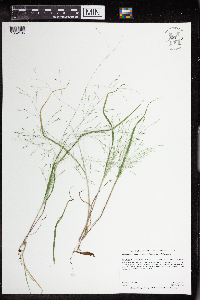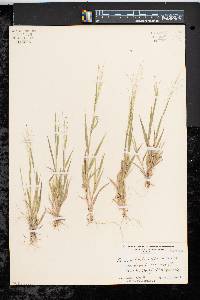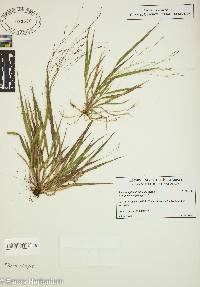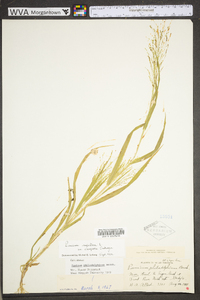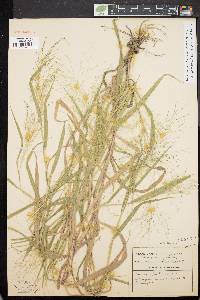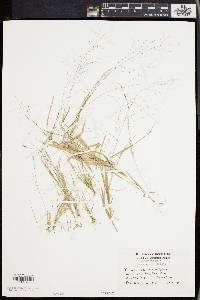Panicum philadelphicum
|
|
|
|
Family: Poaceae
Philadelphia Panic Grass
[Panicum capillare var. gattingeri Nash, morePanicum capillare var. geniculatum Scribn., Panicum capillare var. minimum Engelm. ex Gatt., Panicum capillare var. minus Muhl. ex Nash, Panicum minimum , Panicum minus , Panicum porphyrium Trin. ex Nees, Panicum soboliferum Tuck. ex Scribn. & Merr., Panicum torreyi E. Fourn. ex Hemsl.] |
Annual herb, tufted 8 cm - 1 m tall Leaves: often crowded at the base. Sheaths usually longer than internodes, rounded, hairy (hairs to 5 mm long and bumpy-based). Ligules 0.5 - 1.5 mm long, membranous. Blades upright to ascending, greenish or purplish, 3 - 30 cm long, 2 - 12 mm wide, linear with a truncate (cut straight across) to nearly heart-shaped base and pointed tip, flat, parallel-veined, stiff-hairy to sparsely soft-hairy, marginally fringed with hairs at the base. Inflorescence: a branched arrangement of spikelets (panicle), diffuse, 7 - 27 cm long, 4 - 24 cm wide, one-fourth to one-third as long as the plant, with spreading primary branches and appressed to diverging secondary branches. Secondary branches with one to four spikelets. Fruit: a caryopsis, indehiscent, enclosed within the persistent lemma and palea. Culm: upright to decumbent, unbranched to many-branched, 8 cm - 1 m long, about 1 mm wide, round in cross-section, hairy (hairs bumpy-based). Nodes sparsely to densely soft-hairy. Spikelets: green, 1.5 - 2.5 mm long, about 0.5 mm wide, lance-shaped to ellipsoid. Glumes: unequal, herbaceous. Lower glumes 0.5 - 1 mm long, less than half as long as spikelets, truncate (cut straight across) to pointed at the apex, three- to four-veined. Upper glumes 1.5 - 2 mm long, seven-veined. Lemmas:: Lower lemmas similar to upper glumes, 1.5 - 2 mm long, seven- to nine-veined, keeled. Upper lemmas shiny, with rolled-up margins on the upper surface. Paleas:: Lower paleas absent. Upper paleas longitudinally lined. Florets:: Lower florets sterile. Upper florets bisexual, usually dark brown, about 1.5 mm long, under 0.5 mm wide, pointed and minutely bumpy at the apex. Anthers three. Stigmas red. Similar species: No information at this time. Flowering: July to October Habitat and ecology: Rare in the Chicago Region. It is a plant of limestone pavements and outcrops. Occurence in the Chicago region: native Etymology: Panicum comes from the Latin word panis, meaning bread, or panus, meaning "ear of millet." Philadelphicum means "of or from Philadelphia." Author: The Morton Arboretum Slender annual 1-5 dm, erect or rarely decumbent, branched from the base; blades usually yellowish-green, 3-8 mm, wide; pedicel well exsert; panicle ovoid, ca a third as long as the entire plant; spikelets tending to be paired at the ends of capillary branches; axillary pulvini short-villous to glabrous; spikelets ovoid to ellipsoid, 1.6-2.4 mm, the first glume obtuse or acute, two-fifths as long as the abruptly acuminate second glume and sterile lemma; fr plump, becoming blackish; margins of the lemma barely inrolled, the exposed part of the palea half to three-quarters as wide as the fr; 2n=18. Dry soil and sand fields; N.S. and N.Y. to Minn., s. to Ga. and Tex. (P. tuckermanii, the form, chiefly northern, with the axillary pulvini glabrous) Gleason, Henry A. & Cronquist, Arthur J. 1991. Manual of vascular plants of northeastern United States and adjacent Canada. lxxv + 910 pp. ©The New York Botanical Garden. All rights reserved. Used by permission. From Flora of Indiana (1940) by Charles C. Deam A local to infrequent or frequent species found mostly in the southern half of the state. It is found in poor soil, probably slightly acid, generally in fallow fields and on washed slopes. …… Indiana Coefficient of Conservatism: C = 4 Wetland Indicator Status: FACW |

